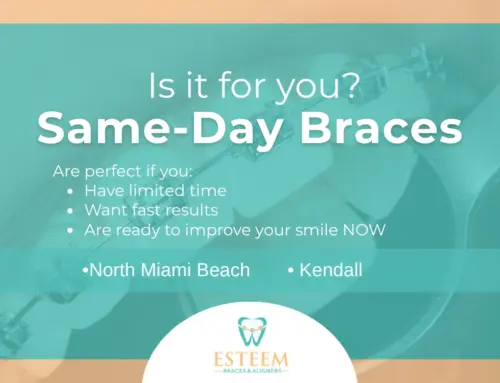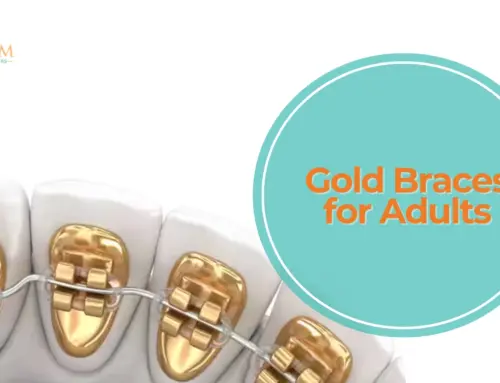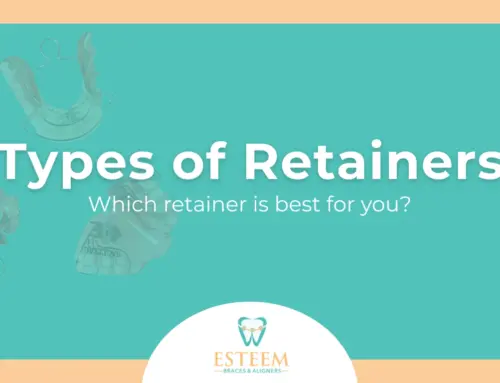Straightening your smile is an exciting journey—and thanks to modern orthodontics, there’s more than one way to get there. For most patients, the decision comes down to two popular options: traditional braces or Invisalign clear aligners. At Esteem Braces & Aligners, we understand that choosing the right treatment can feel overwhelming at first, especially if you’re not sure what to expect. That’s why we created this friendly, easy-to-understand guide to help you compare both options and make a confident choice.
If you’re considering orthodontic treatment, we’d love to meet you and help you get started. Recommend us and ask them to contact us!
What Are Traditional Braces?
Traditional braces are the most well-known type of orthodontic treatment. They use small metal brackets bonded to the teeth, connected by a wire that gradually shifts teeth into place. These systems have been refined over the years and are still highly effective.
Pros of Braces:
-
Ideal for complex cases, including severe crowding or bite issues.
-
Always working—since they can’t be removed, there’s no risk of forgetting to wear them.
-
Cost-effective and widely available.
Things to Consider:
-
Braces are visible, though options like ceramic or tooth-colored brackets are more discreet.
-
You may feel some discomfort or irritation during the first few weeks.
-
There are food restrictions—hard or sticky foods can damage the brackets or wires.
What Is Invisalign?
Invisalign is a modern orthodontic system that uses a series of clear, removable aligners custom-made to fit your teeth. The aligners gently and gradually shift your teeth into alignment. Most people won’t even notice you’re wearing them!
Pros of Invisalign:
-
Virtually invisible—perfect for professionals, teens, and adults who want a discreet look.
-
Removable—take them out to eat, brush, and floss without hassle.
-
Generally more comfortable—no wires or brackets to cause irritation.
Things to Consider:
-
Requires commitment—aligners must be worn 20–22 hours per day for best results.
-
May not be ideal for very complex cases without additional appliances.
-
Sometimes more expensive, depending on your case and treatment length.
How to Choose the Right Option
At Esteem Braces & Aligners, we believe every smile deserves a personalized treatment plan. That’s why we begin with a complete consultation that includes a digital 3D scan, bite analysis, and expert guidance to determine the best option for your specific needs.
Key Factors to Think About:
-
Age: Invisalign is great for teens and adults with good discipline. Braces are often better for children or those who need closer monitoring.
-
Complexity: For mild to moderate corrections, both options work well. For more complex cases, braces might be the better choice.
-
Lifestyle & Appearance: If you want a less visible treatment or need flexibility (e.g., for work or events), Invisalign is a great match.
-
Consistency: If you’re likely to forget wearing aligners or misplace them, fixed braces offer more reliability.
Treatment Time: What to Expect
In most cases, treatment time is similar for Invisalign and braces—typically ranging from 12 to 24 months. What differs is your experience along the way. Invisalign offers a smoother, less invasive feel, while braces offer constant, hands-off progress.
Why Choose Esteem Braces & Aligners?
Our practice is built on precision, personalization, and care. Whether you choose braces or Invisalign, we provide a clear roadmap for your treatment, monitor your progress closely, and adjust your plan as needed to make sure your smile turns out exactly as planned.
We also use the latest orthodontic technology and scanning systems, meaning no goopy impressions, no guesswork, and more comfort for you or your child.
FAQs
Does Invisalign hurt less than braces?
Most patients report that Invisalign is more comfortable overall, especially because there are no metal wires or brackets. However, both treatments may cause mild pressure or soreness, especially when beginning a new stage.
Can I switch from braces to Invisalign mid-treatment?
In some cases, yes. If you’re not far along in treatment or your needs have changed, we can explore transitioning to aligners.
Is Invisalign right for everyone?
Not always. While Invisalign is very versatile, some severe orthodontic issues may require braces or a combination of treatments. We’ll help you determine what’s best during your consultation.
Which is more expensive—braces or Invisalign?
The cost depends on the complexity and duration of treatment. We’ll give you a detailed breakdown and flexible financing options so you can make a decision that works for your budget.
Final Thoughts: Your Smile, Your Way
Deciding between Invisalign and braces doesn’t have to be confusing or stressful. At Esteem Braces & Aligners, we’re here to guide you through every step, answer all your questions, and make your orthodontic experience smooth and rewarding. Whether you’re a teen, an adult, or a parent looking into options for your child—we’ve got the expertise and care you can trust.
Recommend us and ask them to contact us today. Let’s start your journey to a confident, aligned smile.






